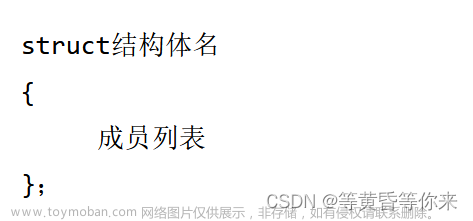Unity 如何获取Texture 的内存大小
在Unity中,要获取Texture的内存文件大小,可以使用UnityEditor.TextureUtil类中的一些函数。这些函数提供了获取存储内存大小和运行时内存大小的方法。由于UnityEditor.TextureUtil是一个内部类,我们需要使用反射来访问它。文章来源地址https://www.toymoban.com/news/detail-653792.html
步骤
- 导入UnityEditor命名空间和System.Reflection命名空间:
using UnityEditor;
using System.Reflection;
- 创建一个函数来获取Texture的内存文件大小:
public static long GetTextureFileSize(Texture2D texture)
{
long fileSize = 0;
// 使用反射获取UnityEditor.TextureUtil类的Type
Type textureUtilType = typeof(TextureImporter).Assembly.GetType("UnityEditor.TextureUtil");
// 使用反射获取UnityEditor.TextureUtil类的GetStorageMemorySizeLong方法
MethodInfo getStorageMemorySizeLongMethod = textureUtilType.GetMethod("GetStorageMemorySizeLong", BindingFlags.Static | BindingFlags.Public);
// 调用GetStorageMemorySizeLong方法获取存储内存大小
fileSize = (long)getStorageMemorySizeLongMethod.Invoke(null, new object[] { texture });
return fileSize;
}
- 创建一个函数来获取Texture的运行时内存大小:
public static long GetTextureRuntimeMemorySize(Texture2D texture)
{
long memorySize = 0;
// 使用反射获取UnityEditor.TextureUtil类的Type
Type textureUtilType = typeof(TextureImporter).Assembly.GetType("UnityEditor.TextureUtil");
// 使用反射获取UnityEditor.TextureUtil类的GetRuntimeMemorySizeLong方法
MethodInfo getRuntimeMemorySizeLongMethod = textureUtilType.GetMethod("GetRuntimeMemorySizeLong", BindingFlags.Static | BindingFlags.Public);
// 调用GetRuntimeMemorySizeLong方法获取运行时内存大小
memorySize = (long)getRuntimeMemorySizeLongMethod.Invoke(null, new object[] { texture });
return memorySize;
}
示例代码
示例 1:获取Texture的存储内存大小
using UnityEngine;
using UnityEditor;
using System.Reflection;
public class TextureSizeExample : MonoBehaviour
{
[SerializeField]
private Texture2D texture;
private void Start()
{
long fileSize = GetTextureFileSize(texture);
Debug.Log("Texture File Size: " + fileSize + " bytes");
}
private static long GetTextureFileSize(Texture2D texture)
{
long fileSize = 0;
Type textureUtilType = typeof(TextureImporter).Assembly.GetType("UnityEditor.TextureUtil");
MethodInfo getStorageMemorySizeLongMethod = textureUtilType.GetMethod("GetStorageMemorySizeLong", BindingFlags.Static | BindingFlags.Public);
fileSize = (long)getStorageMemorySizeLongMethod.Invoke(null, new object[] { texture });
return fileSize;
}
}
示例 2:获取Texture的运行时内存大小
using UnityEngine;
using UnityEditor;
using System.Reflection;
public class TextureSizeExample : MonoBehaviour
{
[SerializeField]
private Texture2D texture;
private void Start()
{
long memorySize = GetTextureRuntimeMemorySize(texture);
Debug.Log("Texture Runtime Memory Size: " + memorySize + " bytes");
}
private static long GetTextureRuntimeMemorySize(Texture2D texture)
{
long memorySize = 0;
Type textureUtilType = typeof(TextureImporter).Assembly.GetType("UnityEditor.TextureUtil");
MethodInfo getRuntimeMemorySizeLongMethod = textureUtilType.GetMethod("GetRuntimeMemorySizeLong", BindingFlags.Static | BindingFlags.Public);
memorySize = (long)getRuntimeMemorySizeLongMethod.Invoke(null, new object[] { texture });
return memorySize;
}
}
示例 3:同时获取Texture的存储内存大小和运行时内存大小
using UnityEngine;
using UnityEditor;
using System.Reflection;
public class TextureSizeExample : MonoBehaviour
{
[SerializeField]
private Texture2D texture;
private void Start()
{
long fileSize = GetTextureFileSize(texture);
long memorySize = GetTextureRuntimeMemorySize(texture);
Debug.Log("Texture File Size: " + fileSize + " bytes");
Debug.Log("Texture Runtime Memory Size: " + memorySize + " bytes");
}
private static long GetTextureFileSize(Texture2D texture)
{
long fileSize = 0;
Type textureUtilType = typeof(TextureImporter).Assembly.GetType("UnityEditor.TextureUtil");
MethodInfo getStorageMemorySizeLongMethod = textureUtilType.GetMethod("GetStorageMemorySizeLong", BindingFlags.Static | BindingFlags.Public);
fileSize = (long)getStorageMemorySizeLongMethod.Invoke(null, new object[] { texture });
return fileSize;
}
private static long GetTextureRuntimeMemorySize(Texture2D texture)
{
long memorySize = 0;
Type textureUtilType = typeof(TextureImporter).Assembly.GetType("UnityEditor.TextureUtil");
MethodInfo getRuntimeMemorySizeLongMethod = textureUtilType.GetMethod("GetRuntimeMemorySizeLong", BindingFlags.Static | BindingFlags.Public);
memorySize = (long)getRuntimeMemorySizeLongMethod.Invoke(null, new object[] { texture });
return memorySize;
}
}
注意事项
- 确保在使用反射访问UnityEditor.TextureUtil类之前,已经导入了UnityEditor命名空间和System.Reflection命名空间。
- 使用反射时,需要使用BindingFlags.Static | BindingFlags.Public来获取静态公共方法。
- 在示例代码中,我们使用了Texture2D类型的变量来表示Texture,你可以根据实际情况修改代码以适应不同的Texture类型。
文章来源:https://www.toymoban.com/news/detail-653792.html
到了这里,关于# Unity 如何获取Texture 的内存大小的文章就介绍完了。如果您还想了解更多内容,请在右上角搜索TOY模板网以前的文章或继续浏览下面的相关文章,希望大家以后多多支持TOY模板网!









